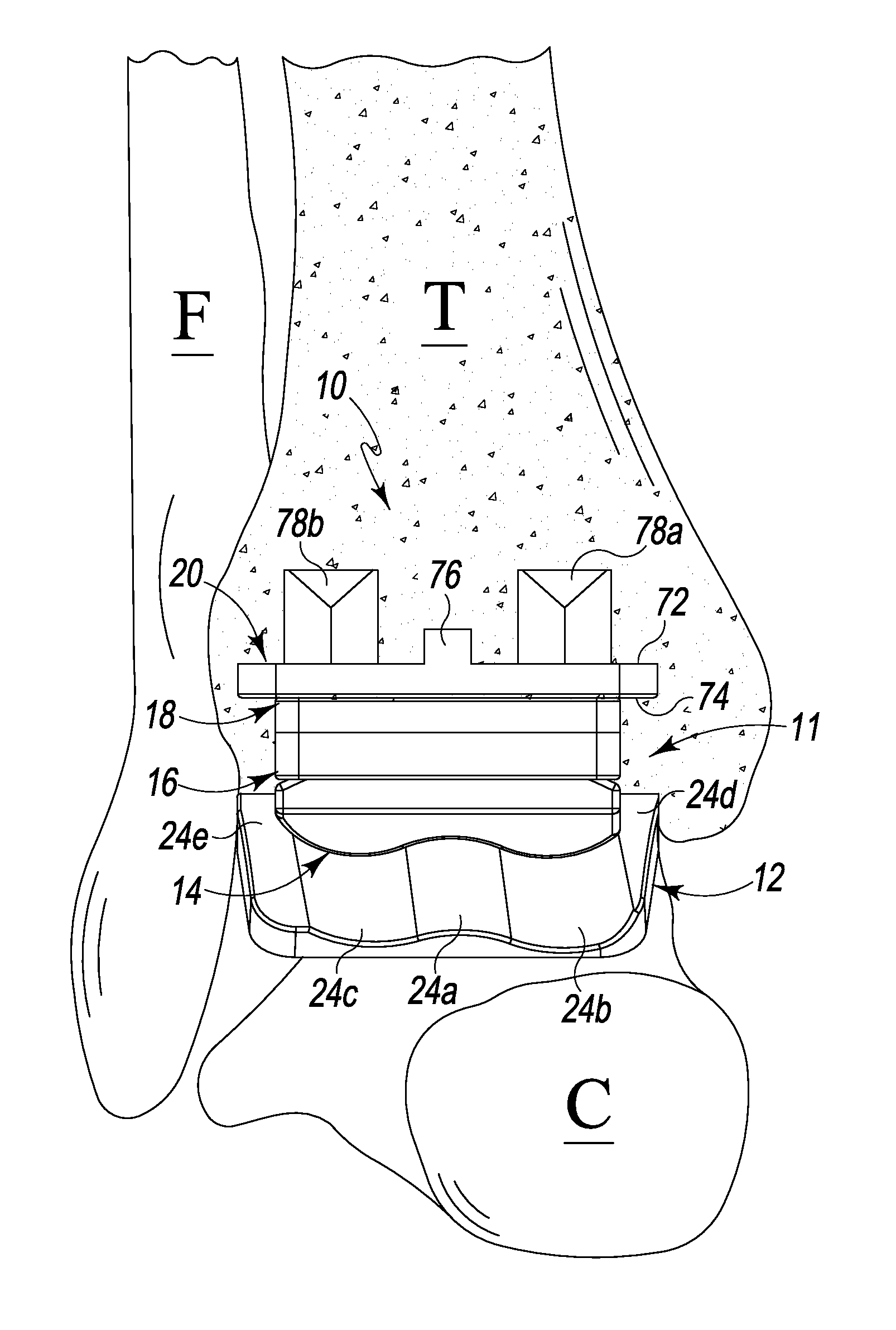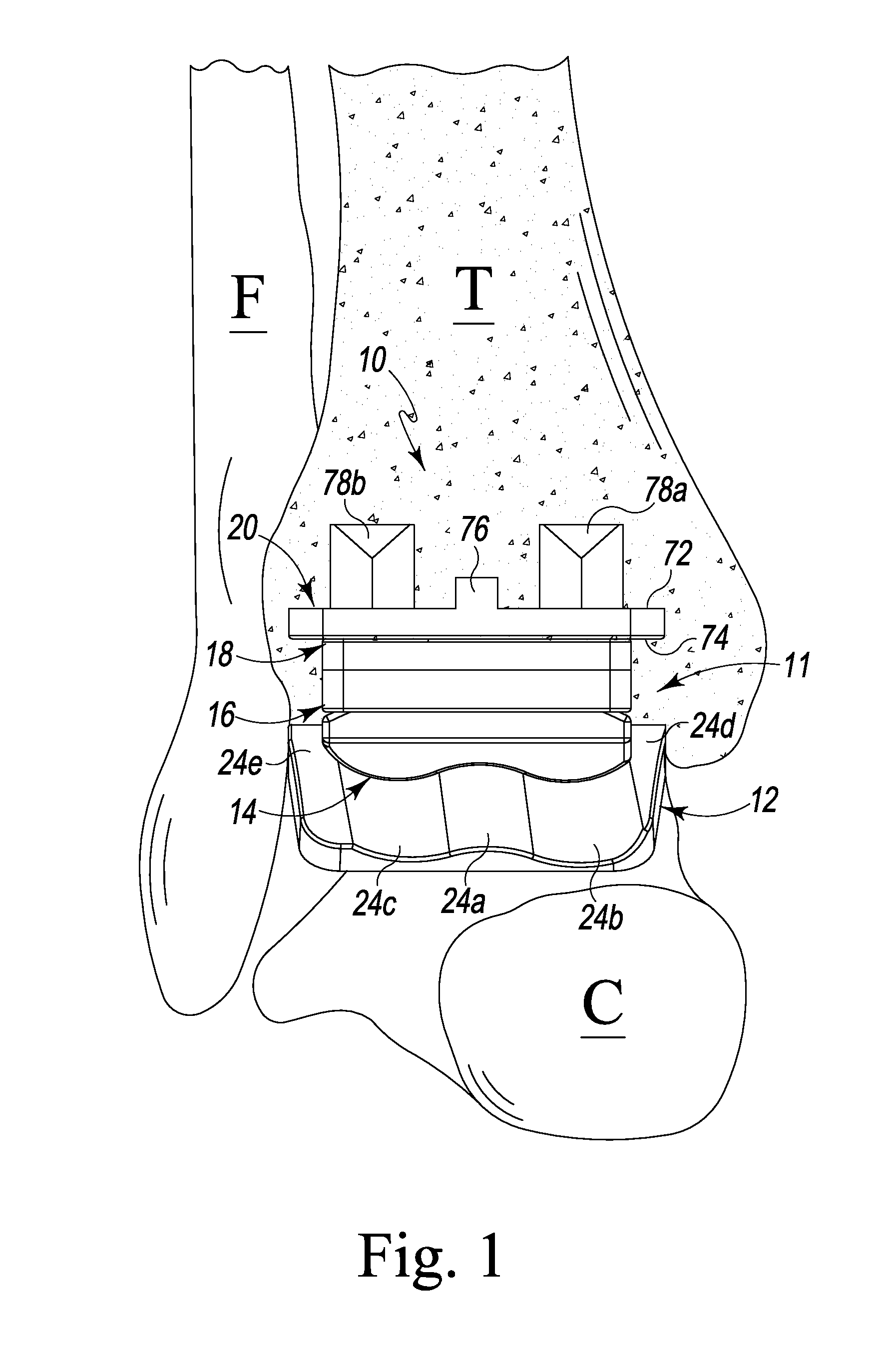Prosthetic device with multi-axis dual bearing assembly and methods for resection
a dual bearing and prosthesis technology, applied in the field of orthopaedic prostheses and joint replacement systems and methods, can solve the problems of limited and risky access to the ankle joint, the concept of total ankle arthroplasty has a long and relatively unsuccessful history, and the difficulty of replacing an ankle joint with an ankle prosthesis is particularly difficul
- Summary
- Abstract
- Description
- Claims
- Application Information
AI Technical Summary
Benefits of technology
Problems solved by technology
Method used
Image
Examples
Embodiment Construction
[0062]Referring to FIG. 1 there is depicted an anterior view of general bones of a human ankle / ankle area of a right foot (i.e. the tibia bone T, the fibula bone F and the calceneus bone C) in which an ankle prosthesis, generally designated 10, fashioned in accordance with the principles of the present invention, has been implanted. It should be understood that the talus bone of the ankle is not seen in FIG. 1 due to the ankle prosthesis 10 being implanted thereon. The ankle prosthesis 10 is an embodiment of a multi-axial dual mobile bearing prosthesis, as per the present principles, which is usable in various orthopedic prostheses for other parts of the body. However, the principles of the present invention will be described in connection with an ankle prosthesis. The ankle prosthesis 10 is a right ankle prosthesis since a portion thereof is fashioned for the right ankle as described herein. The ankle prosthesis can, of course, be made for a left ankle as is described herein.
[0063]...
PUM
 Login to View More
Login to View More Abstract
Description
Claims
Application Information
 Login to View More
Login to View More - R&D
- Intellectual Property
- Life Sciences
- Materials
- Tech Scout
- Unparalleled Data Quality
- Higher Quality Content
- 60% Fewer Hallucinations
Browse by: Latest US Patents, China's latest patents, Technical Efficacy Thesaurus, Application Domain, Technology Topic, Popular Technical Reports.
© 2025 PatSnap. All rights reserved.Legal|Privacy policy|Modern Slavery Act Transparency Statement|Sitemap|About US| Contact US: help@patsnap.com



